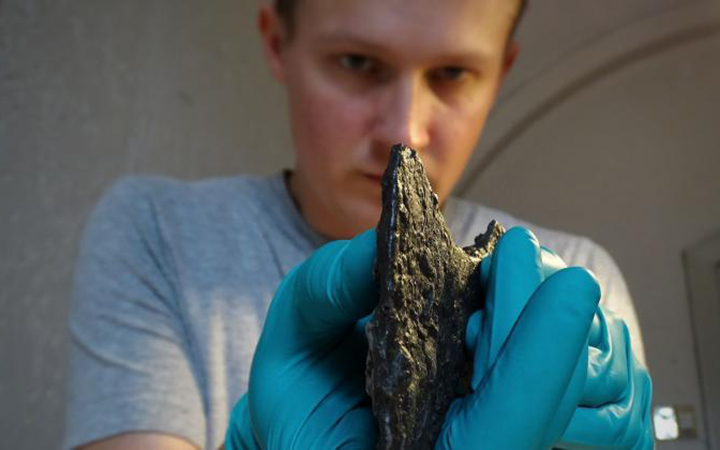Medieval Warrior Woman Found in a Viking Graveyard Was No Viking

When archaeologists discovered the remains of a woman in a Viking graveyard in Denmark, an axe near her skeleton told them that she may have been a fighter. But closer examination of both the weapon and her burial revealed something unexpected: She was no Viking.
Rather, the woman was Slavic, and likely came from a region in Eastern Europe that is now Poland, representatives of Poland's Ministry of Science and Higher Education said in a statement.
A coin from the cemetery, on the Danish island of Langeland, revealed that the burial site is about 1,000 years old, according to the statement. The woman's grave was the only one that held a weapon. [Beyond Wonder Woman: 12 Mighty Female Warriors]
Throughout history and across the globe, women have wielded weapons. In recent years, archaeologists have found evidence that some Viking women were buried with weapons. But in many of those cases, there were no human remains in the graves, and the gender of the former occupants was inferred from the presence of jewelry and other objects that typically belonged to women, Leszek Gardeła, an archaeologist with the University of Bonn in Germany and the University of Bergen in Norway, said in the statement.
However, the Slavic woman's skeleton was still lying in the grave. The skeleton showed no obvious injuries that would have indicated how she died, Gardeła said. The axe resembled similar tools from the southern Baltic — a region that includes modern countries bordering the Baltic Sea, such as Poland, Germany and Lithuania — and the chambered construction of her grave is reminiscent of cemetery structures from that part of the world during the Middle Ages.
During this period in Denmark, Slavs and Scandinavians lived close together, which would explain why a Slavic woman was laid to rest in a Danish graveyard, Gardeła said in the statement.
To date, approximately 30 graves of women containing weapons have been discovered in Norway, Denmark and Sweden. Of those, 10 graves — including that of the Slavic warrior — were identified by Gardeła. His findings will be published in 2020 as part of a project investigating Viking and Slavic women warriors, titled "Amazons of the North," according to the statement.
Get the world’s most fascinating discoveries delivered straight to your inbox.
- Photos: Viking Warrior Is Actually a Woman
- 5 Myths About Women's Bodies
- Photos: 10th-Century Viking Tomb Unearthed in Denmark
Originally published on Live Science.

Mindy Weisberger is a science journalist and author of "Rise of the Zombie Bugs: The Surprising Science of Parasitic Mind-Control" (Hopkins Press). She formerly edited for Scholastic and was a channel editor and senior writer for Live Science. She has reported on general science, covering climate change, paleontology, biology and space. Mindy studied film at Columbia University; prior to LS, she produced, wrote and directed media for the American Museum of Natural History in NYC. Her videos about dinosaurs, astrophysics, biodiversity and evolution appear in museums and science centers worldwide, earning awards such as the CINE Golden Eagle and the Communicator Award of Excellence. Her writing has also appeared in Scientific American, The Washington Post, How It Works Magazine and CNN.

